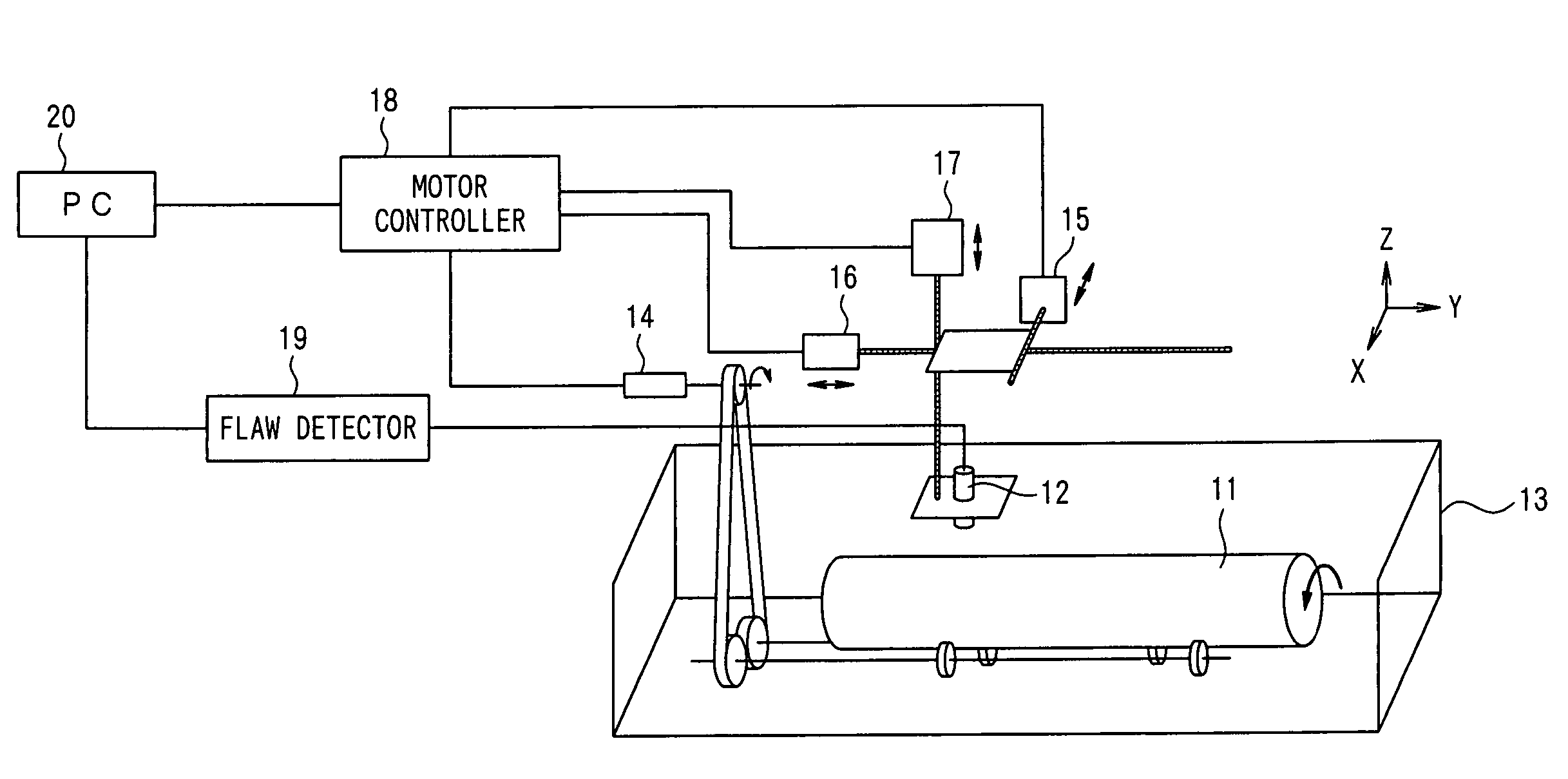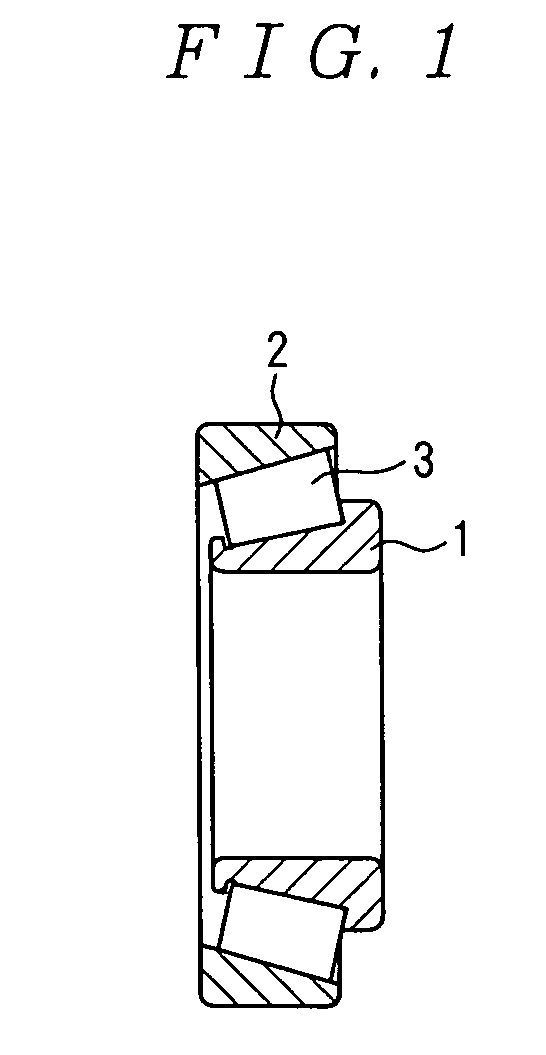Bearing steel,method for evaluating large-sized inclusions in the steel and rolling bearing
a technology of inclusions and bearings, applied in the field of bearings, can solve the problems of low existence probability, inability to predict large-sized inclusions, and difficulty in detection of large-sized inclusions, so as to reduce the cost, improve detection intensity, and improve the effect of defect detection accuracy
- Summary
- Abstract
- Description
- Claims
- Application Information
AI Technical Summary
Benefits of technology
Problems solved by technology
Method used
Image
Examples
first embodiment
[0083]FIG. 1 is a cross sectional view of a rolling bearing manufactured with a steel for use in bearing in this embodiment. The rolling bearing is a tapered roller bearing, with a bearing number of HR 32017×J having an inner diameter of 85 mmφ, an outer diameter of 130 mmφ and a width of 29 mm. In the drawing, numeral 1 is for an inner ring, numeral 2 is for an outer ring and numeral 3 is for rolling element (tapered roller).
[0084] At first, as shown in Table 1, steel for use in bearings from different steel making methods were prepared by four types of charges A, B, C, and D. Table 1 also shows the result of evaluation by the amount of oxygen and the extremal value statistic method together. In the Table, scarce difference was observed for the amount of oxygen (measured by an inert gas melting combustion method).
[0085] Further, no significant difference was observed also for the result of the extremal value statistic method showing by the square root length of the area of the ma...
second embodiment
[0113] Then, description is to be made to a second embodiment of the steel for use in bearing and the evaluation method for the large-sized inclusions thereof according to the invention.
[0114] It is to be described here to a case of effectively ensuring the cleanliness in a smaller volume for flaw detection in a case where it is expected that more large-sized inclusions are contained or they are contained more after inspection, compared with the first embodiment described above.
[0115] At first, as shown in Table 3, steels for use in bearings from different steel making methods were provided by three types of charges A, E, and F. Among them, the steel for use in bearing of the charge A is identical with that of the charge A in the first embodiment described above.
[0116] Table 3 also shows the result evaluated by the amount of oxygen and the extremal value statistic method together.
[0117] As apparent from the table, there is a difference in the amount of oxygen on every charge. Fu...
third embodiment
[0127] Then, description is to be made to a third embodiment for the steel for use in bearing and the evaluation method for large-sized inclusions thereof according to the invention.
[0128] In this embodiment, ultrasonic wave flaw detection by the normal beam technique at a water distance of 15 mm was conducted for the round bar with artificial defect manufactured as shown in FIG. 6 described previously, by utilizing a polymer probe using a polymer transducer as an example of the invention (20 MHz, 30 MHz, 40 MHz, transducer diameter: 6 mm, water immersion focal distance: 25 mm) and a ceramic probe using an existent ceramic transducer (10 MHz, 15 MHz, and 20 MHz; transducer diameter: 6 mm, water immersion focal distance: 25 mm).
[0129]FIG. 14 shows a relation between the flaw detection depth and the artificial defect echo intensity at each of the flaw detection frequencies. The flaw detection depth at which the echo intensity decreased to one-half of the peak echo intensity was defi...
PUM
| Property | Measurement | Unit |
|---|---|---|
| frequency | aaaaa | aaaaa |
| frequency | aaaaa | aaaaa |
| volume | aaaaa | aaaaa |
Abstract
Description
Claims
Application Information
 Login to View More
Login to View More - R&D
- Intellectual Property
- Life Sciences
- Materials
- Tech Scout
- Unparalleled Data Quality
- Higher Quality Content
- 60% Fewer Hallucinations
Browse by: Latest US Patents, China's latest patents, Technical Efficacy Thesaurus, Application Domain, Technology Topic, Popular Technical Reports.
© 2025 PatSnap. All rights reserved.Legal|Privacy policy|Modern Slavery Act Transparency Statement|Sitemap|About US| Contact US: help@patsnap.com



